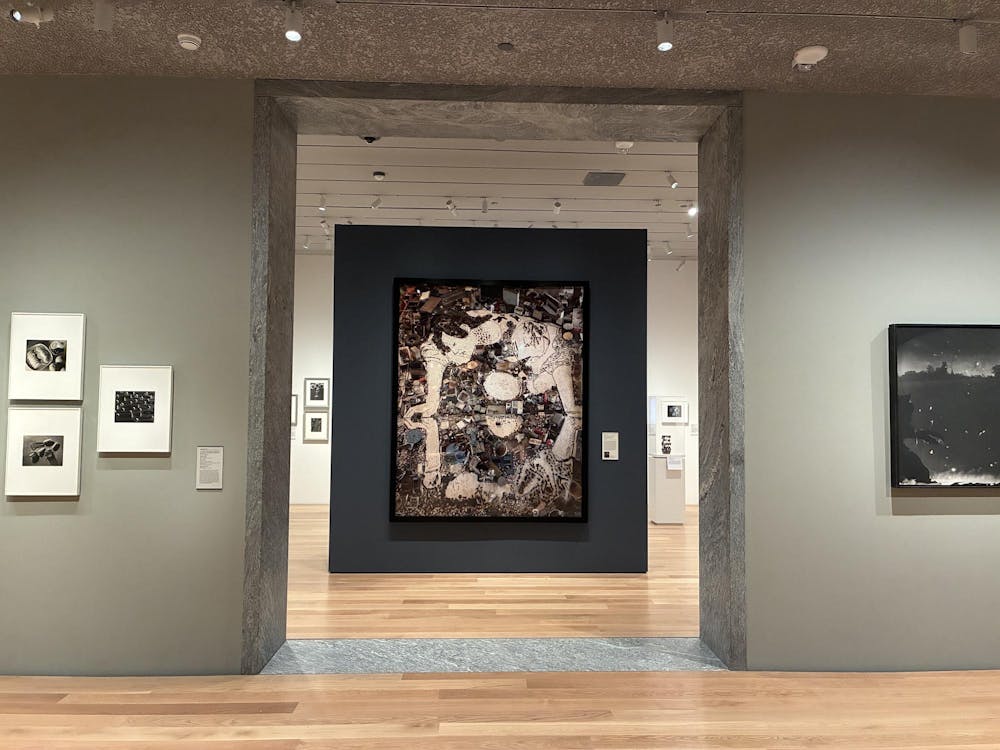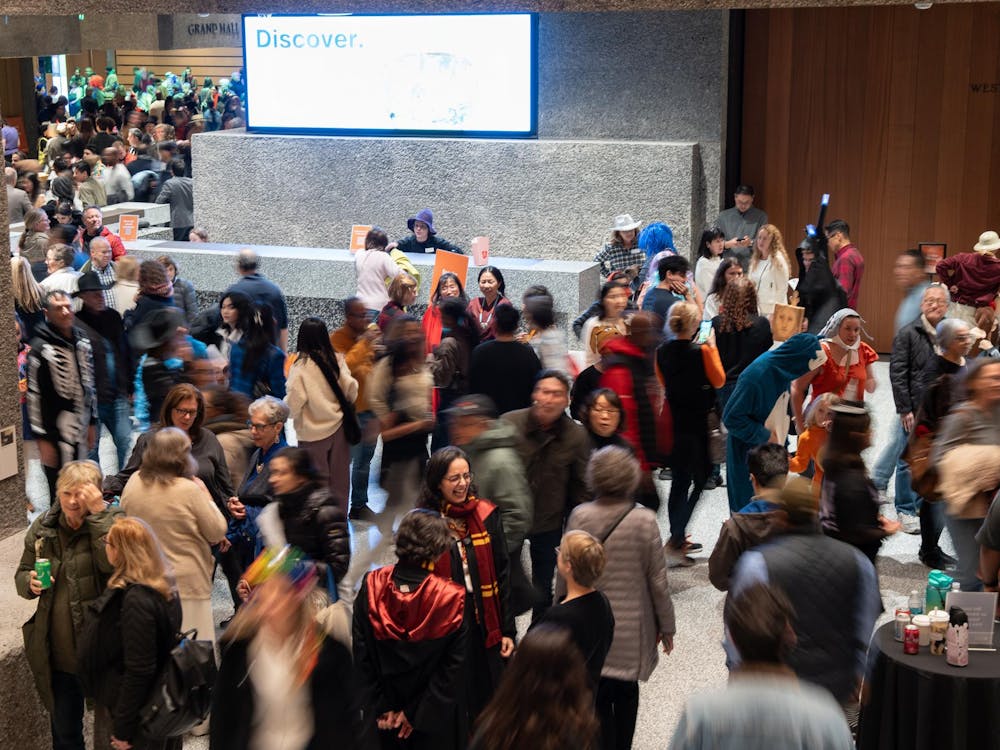What does a photograph look like? Is it just a picture pasted on a wall, or is it something you can hold and move with? Maybe, according to Peter Bunnell, it’s all of the above.
This is the question the Princeton University Art Museum (PUAM) wrestles with in its first photography exhibit. The idea comes from Bunnell, a legend in the history of photography and the first endowed professor of photography history in the U.S. His quote, “What Photographs Look Like,” is the core theme of the gallery. The description on the wall reads, “Bunnell used the phrase to upend his students’ expectations of photographs as strictly two dimensional prints and to invite delight in the expansive nature of the medium.” I took a walk through the gallery to determine if it effectively conveys this theme of transcendence through medium and surprise.
The pavilion has only one way in: a confrontation with Narcissus. The colossal piece that characterizes the gallery, Vik Muniz’s Narcissus from his series “Pictures of Junk,” towers over its onlookers. Due to its size, it completely blocks the viewers from seeing the rest of the gallery; one must travel around Narcissus in order to see the rest. Playing with perspective and distance, Narcissus delights from afar with its reproduction of the 16th century painting by Caravaggio.
Its magnificence reveals itself by looking closer and seeing that it is entirely composed of pieces of trash, arranged by Muniz’s assistants. Not just a photograph, but a living piece of artwork and sculpture, Narcissus encapsulates the idea of surpassing the medium of photography and entering other worlds. This makes it an apt choice to begin the viewer’s experience of this gallery.
“I think it’s fantastic. I think it manages to pack an encyclopedic history of photography into an intimate space,” said Monica Bravo, an assistant professor of art and archaeology who specializes in the history of photography and modern art in the Americas.
Bunnell’s legacy is celebrated with a display of his personal collection of “What Photographs Look Like,” which includes objects like magazines, postcards, and even an albumen print of Nassau Hall. Bravo told the ‘Prince’ this collection of Bunnell’s provides “a range of different photographic processes as well as formats, and any idea of photography in an expanded field too.”

A portrait of Peter Bunnell, along with some of his collected photographs.
Michael Grasso / The Daily Princetonian
This collection surpasses the two dimensions that often constrict photography, and there are plenty of videos featured next to images around the gallery. Bravo expressed how she thought the two could be mixed, saying, “I actually always believe that photography should be taught in relation to other media because photography exists in a larger visual ecosystem. So for me, it was very effective to see photography placed next to video.”
However, one piece fits awkwardly amid the rest. Wu Tsang’s Miss Communication and Mr:Re is a two-channel film, presented by two video screens parallel to each other. Mounted on the back of a dividing wall, Tsang’s film is accompanied by two speakers projecting separate voicemail messages of the subjects shown on screen. They look directly at the camera, expressionless. Although video and photography work in relation to each other, this piece interacts oddly with its environment.
The two voices are muffled in the noise of the other, and the flat facial expressions provide little to no enrichment when regarding for more than a couple seconds. It lacks congruency with the rest of the gallery due to its awkward placement, facing Bunnell’s collections and mounted on a faux-wall. A little forgettable — and more experimental than the rest — Miss Communication and Mr:Re transcends the realm of photography solely by being a film, not as an interesting merge of the two art forms.
Besides that piece, the gallery comes together cohesively. The multitudes of black and white filling the walls mask subversive elements of the artwork. One may wonder why a drawing finds itself in the photography gallery, but Sir John Herschel’s “Castle of Chillon” camera lucida drawing evokes the beginnings of the art form. The camera lucida was an optical device invented to superimpose an image of a certain object on a canvas, allowing for smooth tracing.
Paired with the history of photography, Bunnell’s legacy is at the forefront of this first exhibition. Bunnell died in September 2021, just mere months after the old art museum was demolished. People familiar with the history of photography will likely be familiar with his impact, and the importance of his centrality in the exhibit. However, if this is someone’s first entrance into photography, they may not understand the emphasis.

That does not mean they will not learn from him, as Bunnell was, above all, a teacher. His teaching persists in PUAM’s photography gallery, as the photographs, photo sculptures, camera lucidas, and more show “what photographs look like.”
Michael Grasso is a contributing writer for The Prospect and a member of the Class of 2029. He can be reached at mg7604[at]princeton.edu.
Please send any corrections to corrections[at]dailyprincetonian.com.








